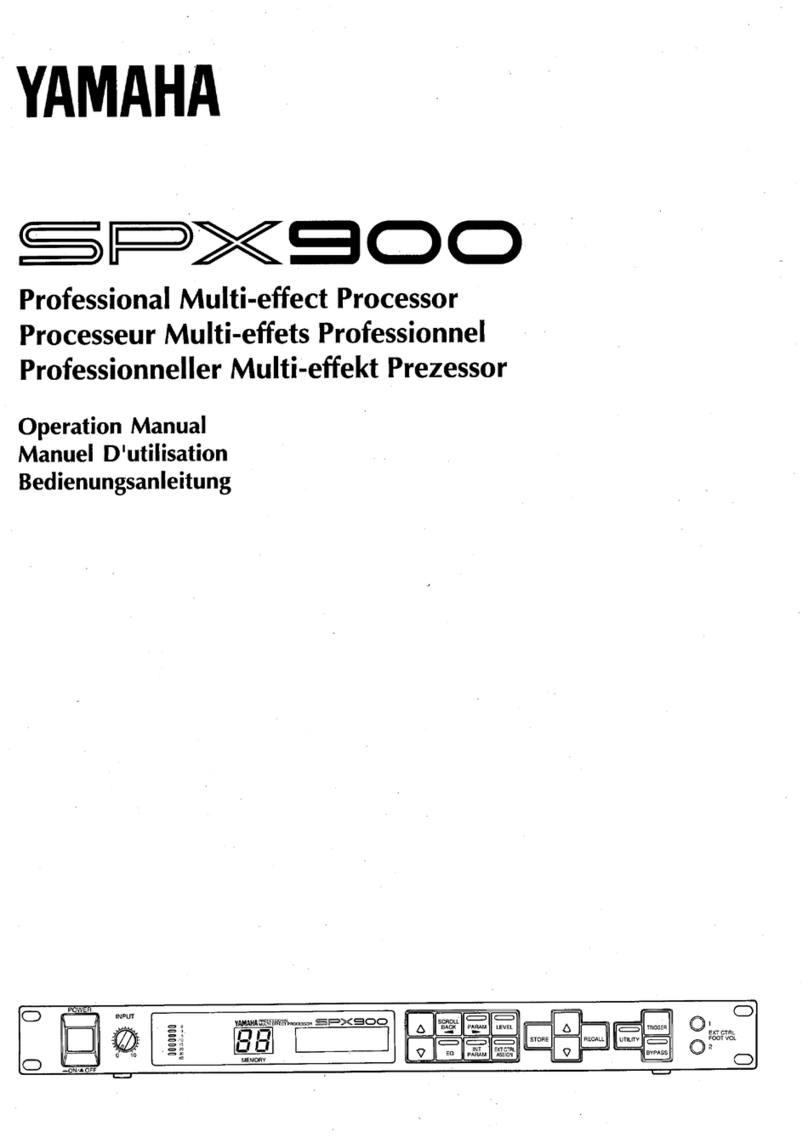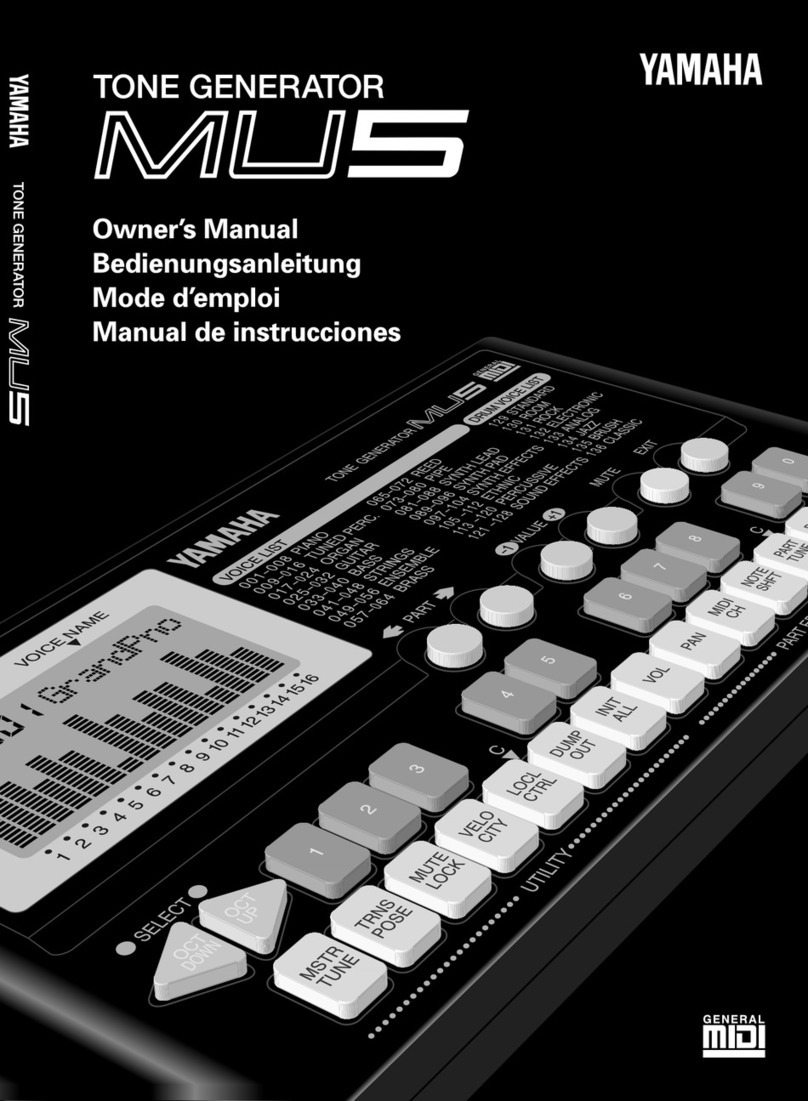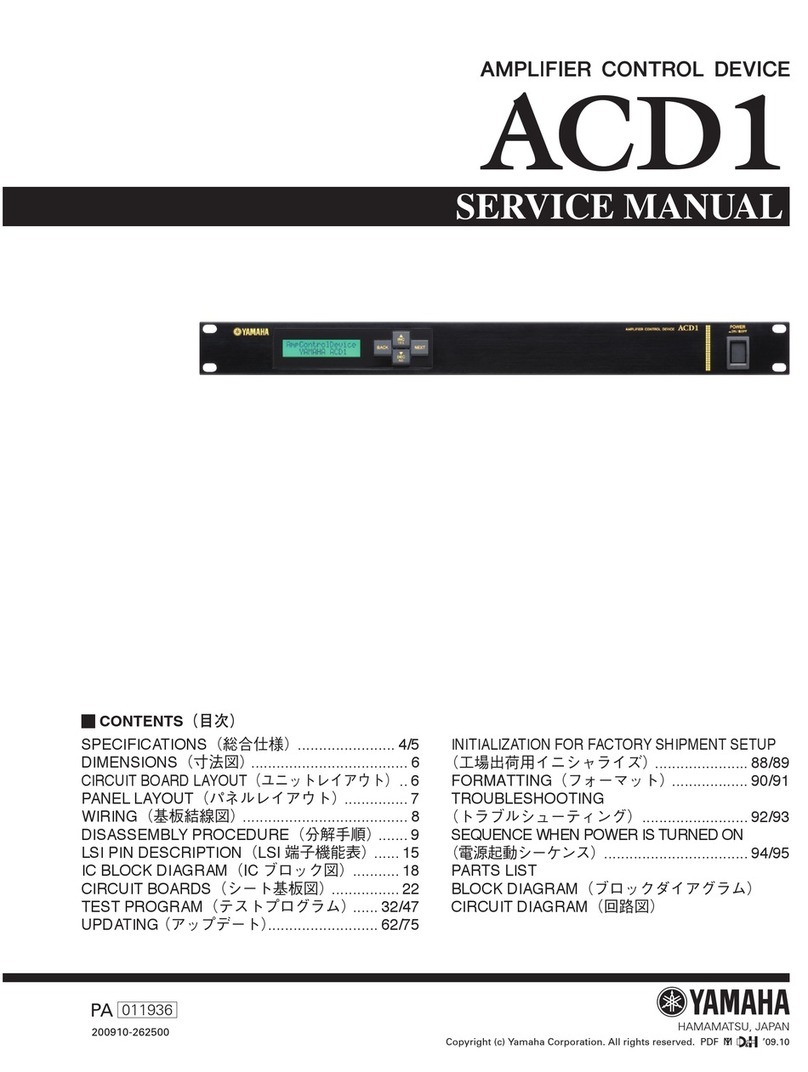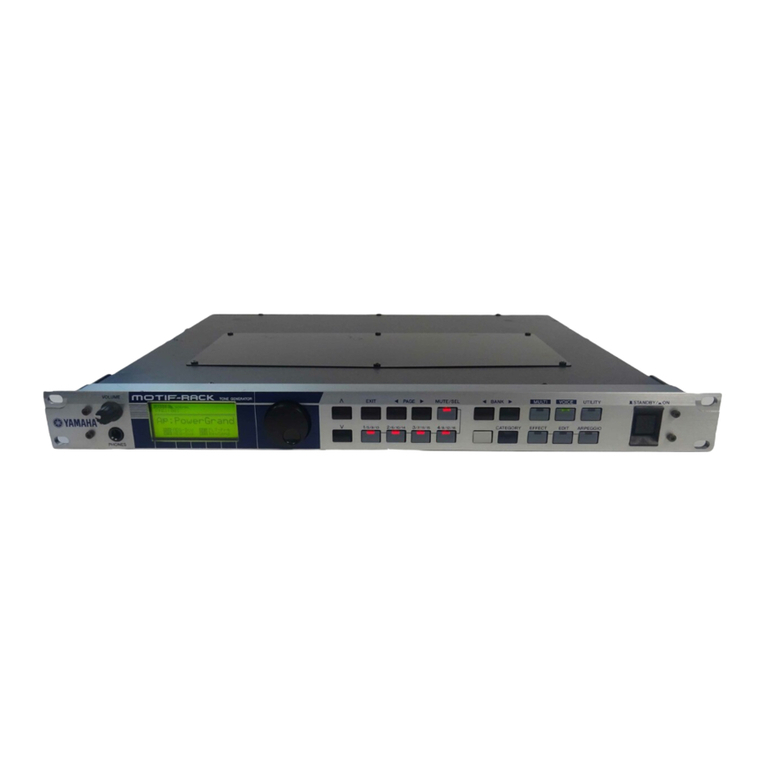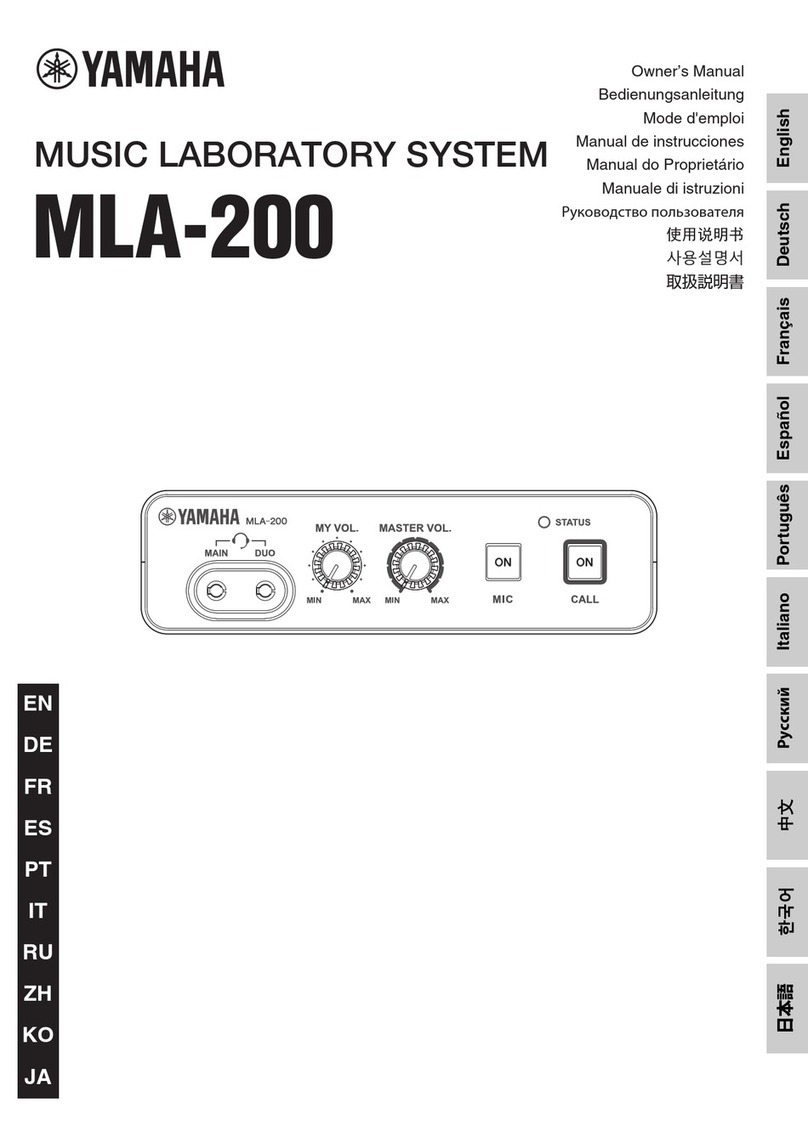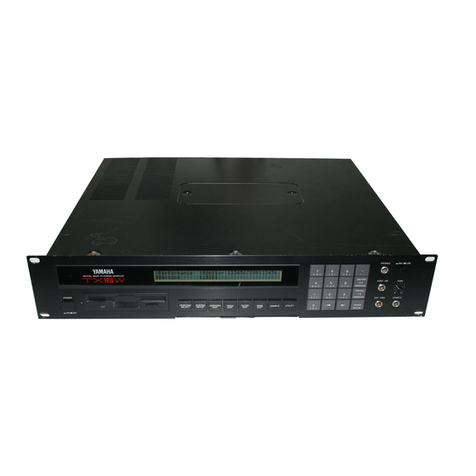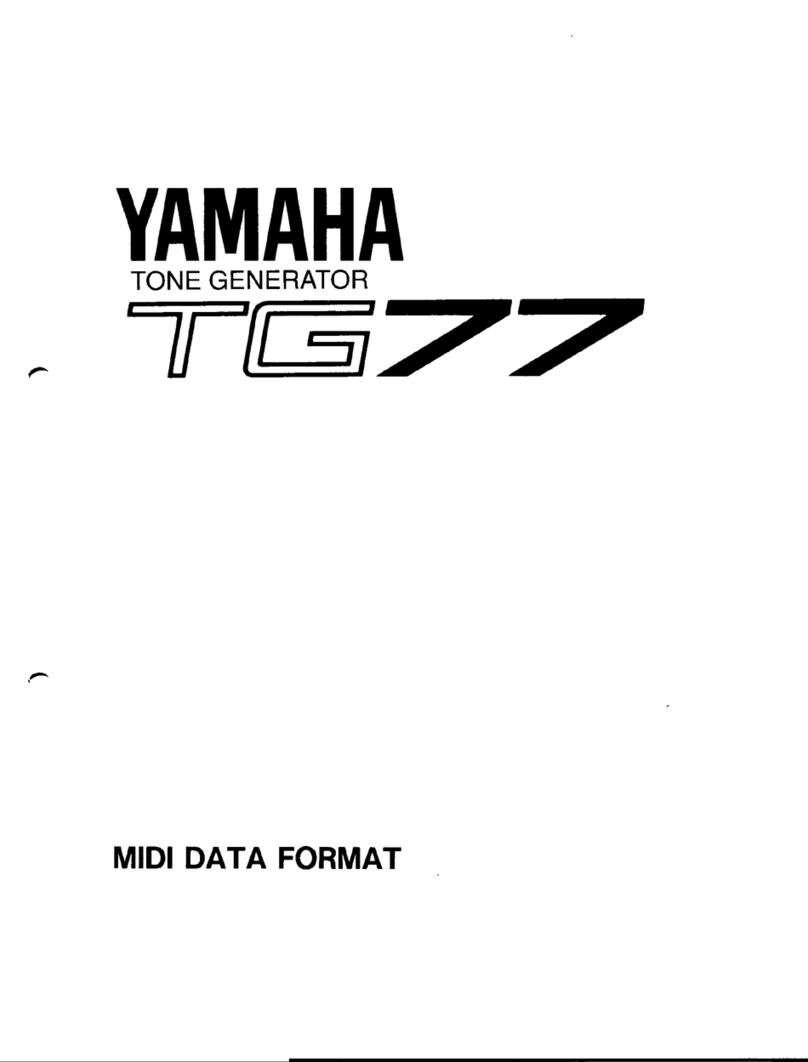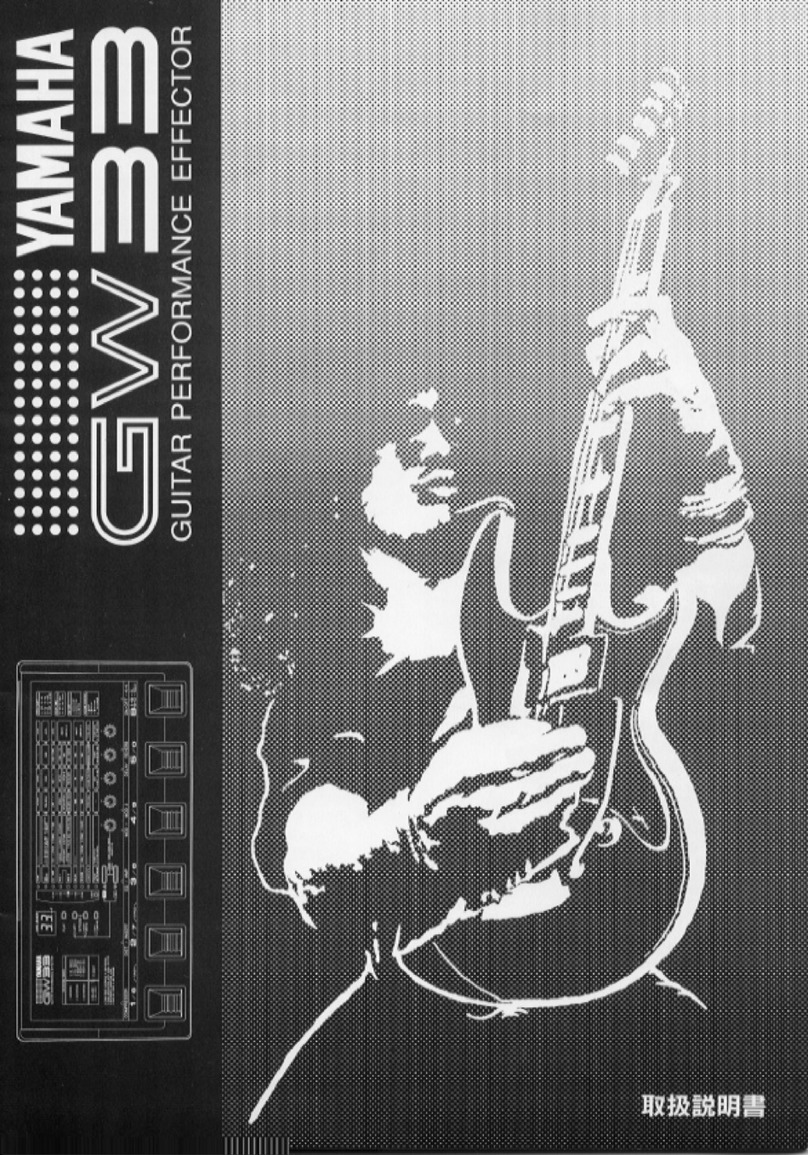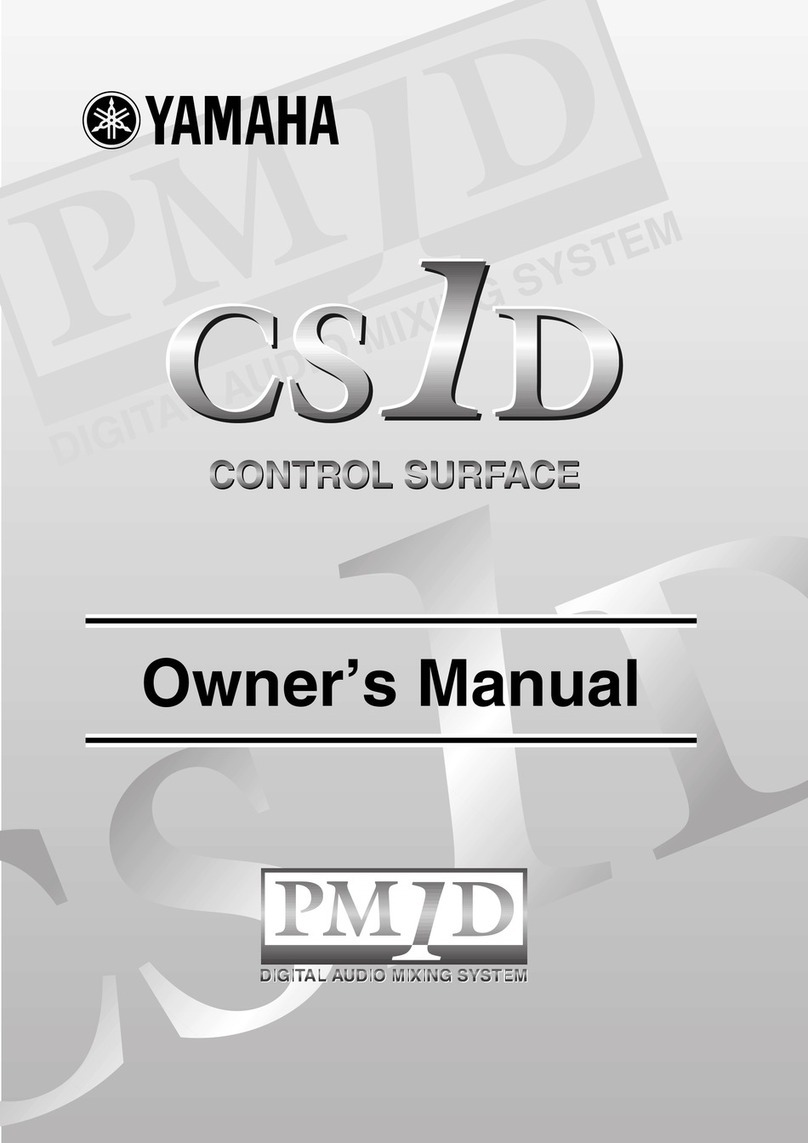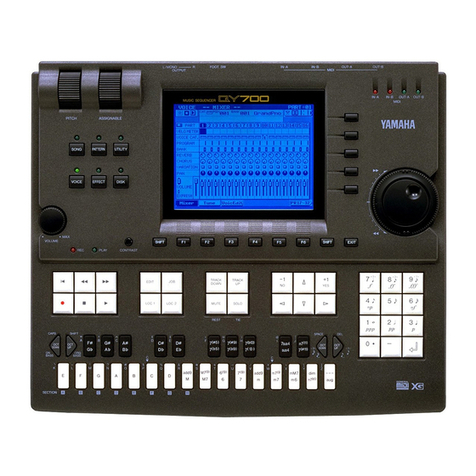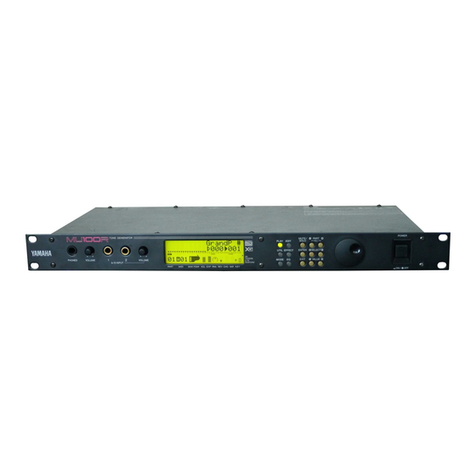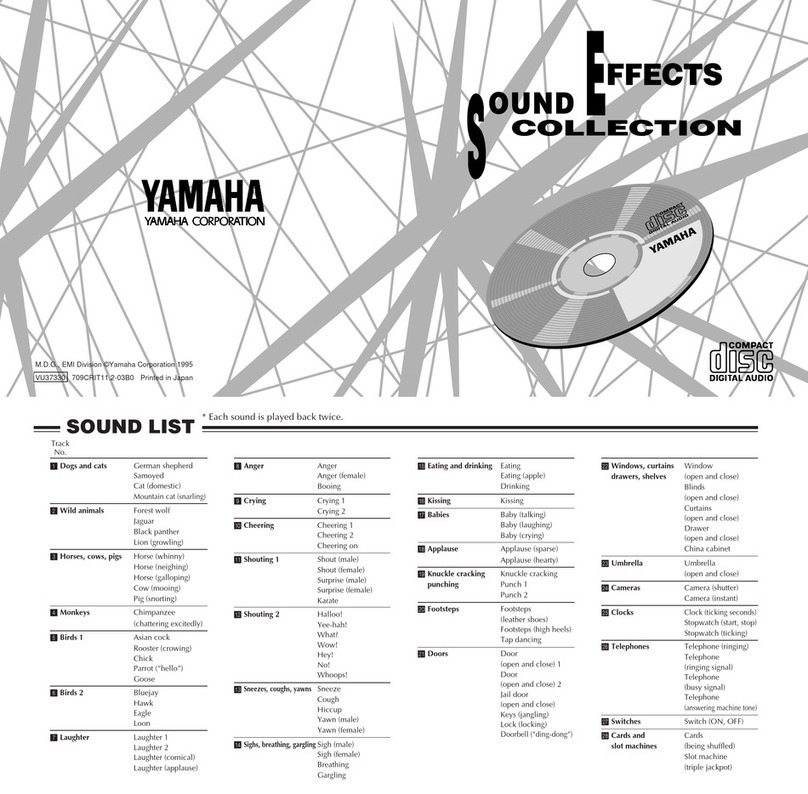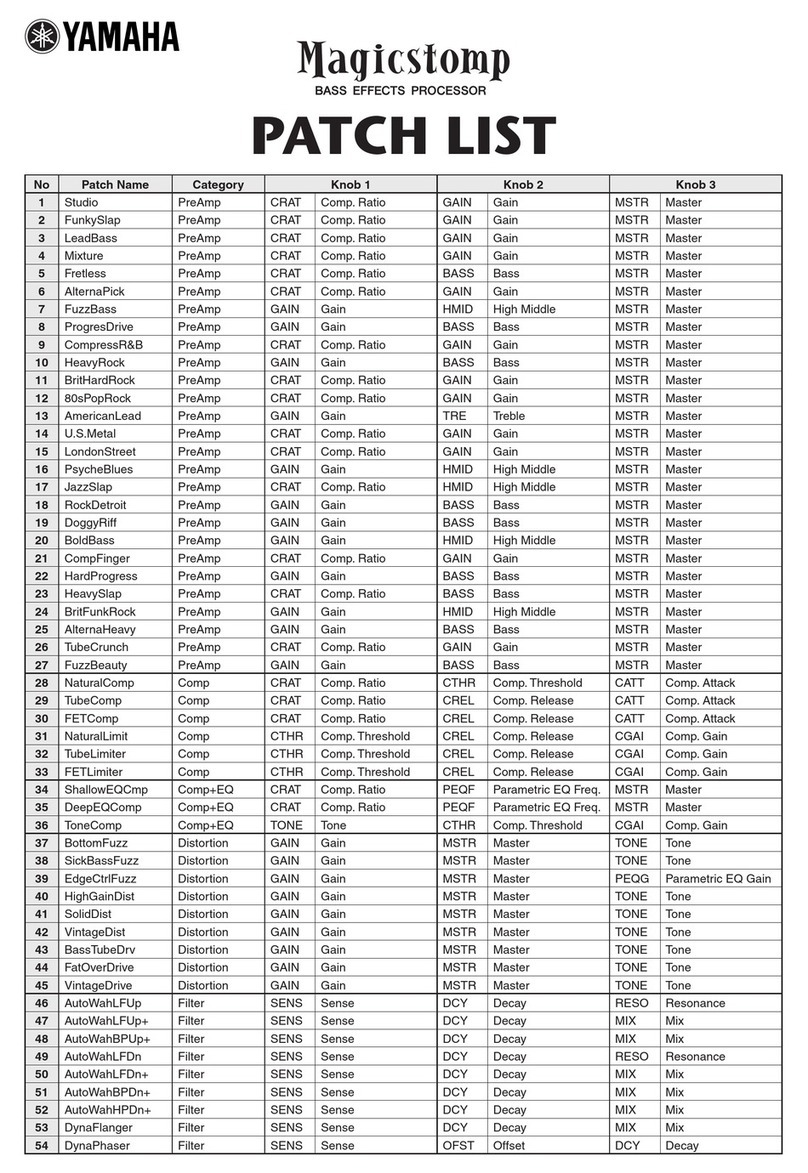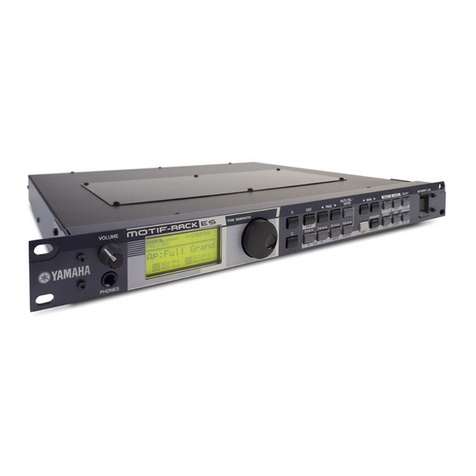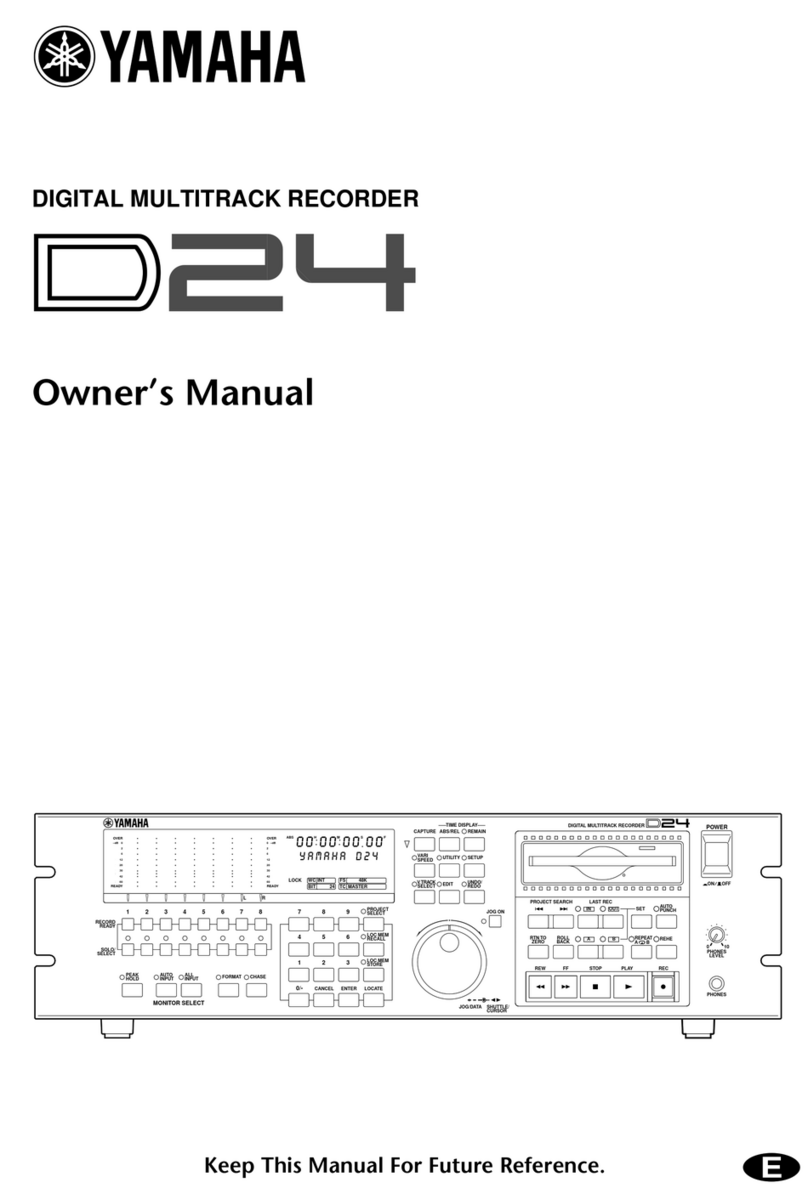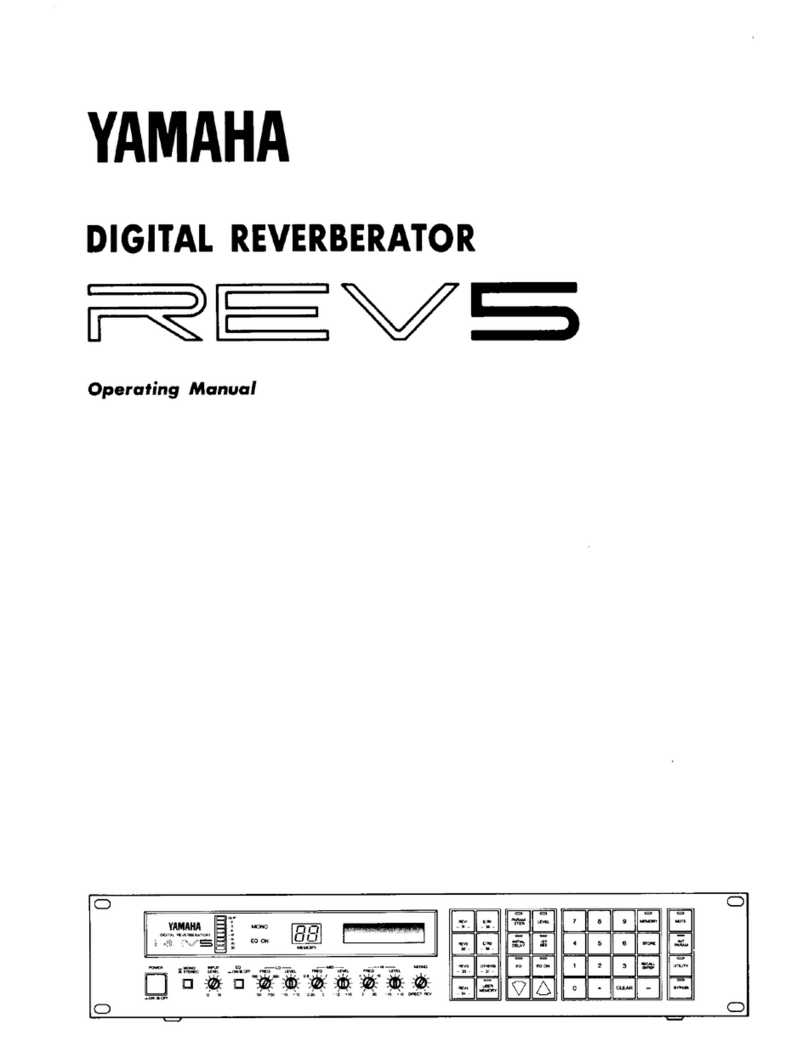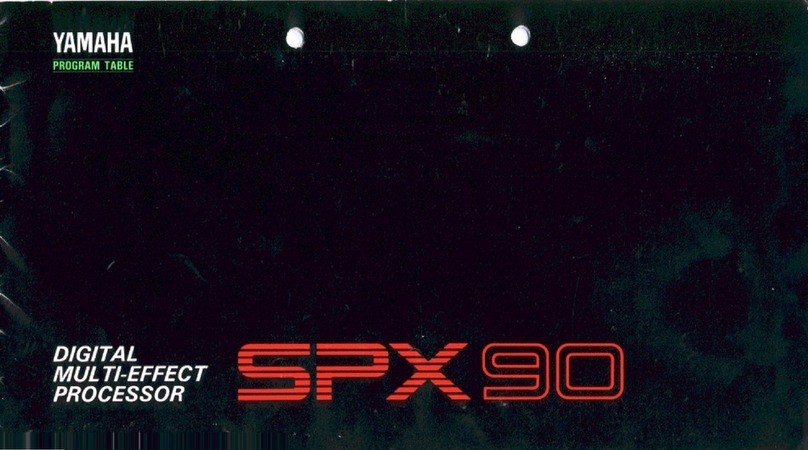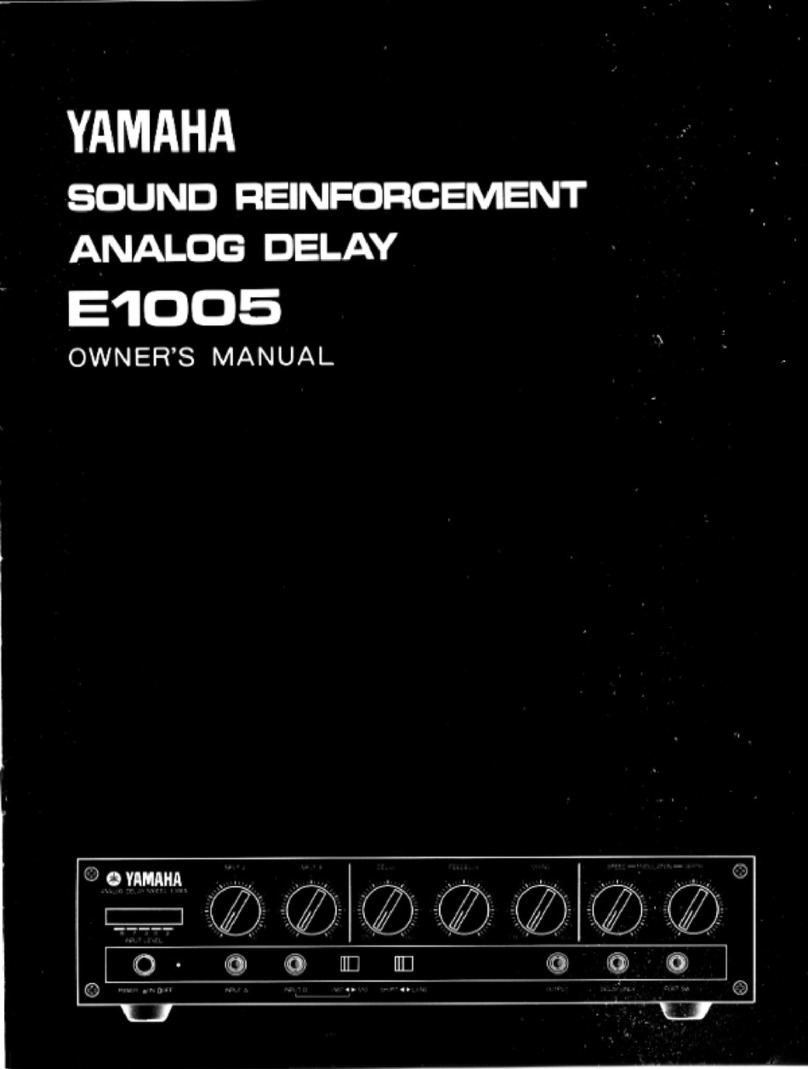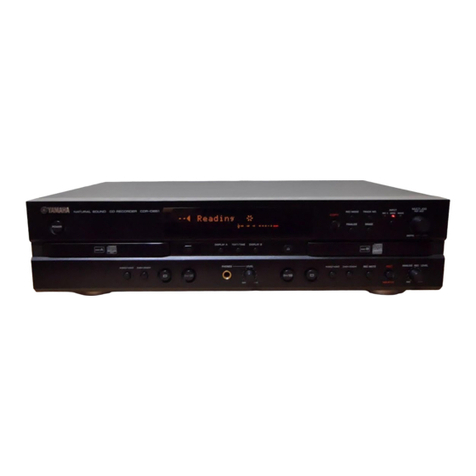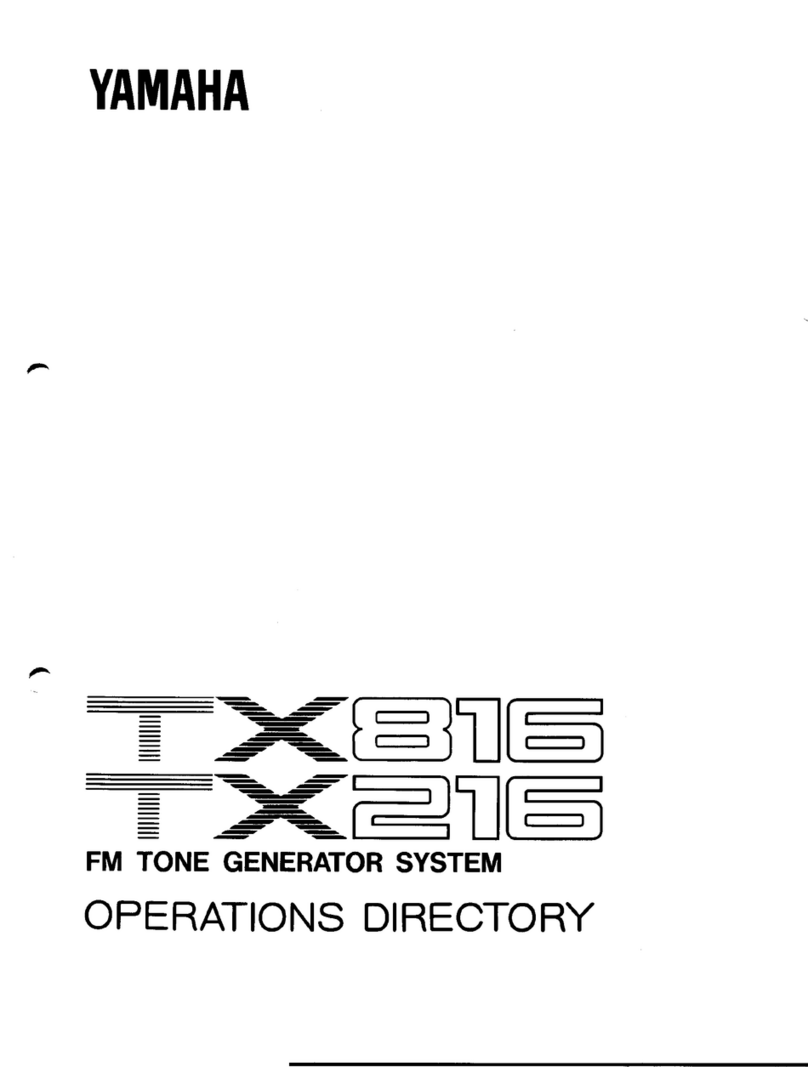
INTRODUCTION
Congratulations on your acquisition of a Yamaha SPX900 Professional Multi-effect
Processor. The SPX900 is a highly sophisticated digital reverberation and effects system
which offers 50 preset effect programs including accurate simulations of natural rever-
beration and early-reflections, delay and echo effects, gated effects, modulation effects,
a versatile compressor, a harmonic exciter, multiple effects which function as several
SPX900 units in one, freeze (sampling) programs and others. With a sampling frequency
of 44.1 kHz, it delivers full, flat frequency response from 20 Hz to 20 kHz for exceptionally
clean, “transparent” effect sound. The preset effect programs can be edited, re-titled, and
stored in any of 49 RAM user memory locations. Individual two-band parametric EQ and
dynamic filter parameters are provided for each effect program for precise tonal tailor-
ing. In addition to the basic effect and EQ parameters, the SPX900 offers a list of “internal
parameters” which provide exacting control over the effect sound. The SPX900 is also
MIDI compatible, with a MIDI IN terminal that allows MIDI selection of effect programs,
and a switchable MIDI THRU/OUT terminal. When switched to OUT, edited programs
stored in internal RAM can be dumped to a MIDI data recorder or other data storage
device. Programs thus stored can be reloaded when necessary via the MIDI IN termi-
nal. As an extra touch of convenience the SPX900’s input and output terminals can be
switched to match -20 dBm or +4 dBm line levels + providing compatibility with a broader
range of sound equipment.
In order to fully take advantage of all the capability offered by the SPX900 Professional
Multi-effect Processor, we urge you to read this operation manual thoroughly – and keep
it in a safe place for later reference.
FCC INFORMATION
While the following statements are provided to comply
with FCC Regulations in the United States, the cor-
rective measures listed below are applicable world-
wide.
This series of Yamaha professional music equipment
uses frequencies that appear in the radio frequency
range and if installed in the immediate proximity of
some types of audio or video devices (within three
meters), interference may occur. This series of Yamaha
professional music equipment has been type tested
and found to comply with the specifications set for
a class B computing device in accordance with those
specifications listed in subpart J of part 15 of the FCC
rules. These rules are designed to provide a reasonable
measure of protection against such interference.
However, this does not guarantee that interference
will not occur. If your professional music equipment
should besuspected of causing interference with other
Relocate either the equipment or the electronic device
that is being affected by the interference. Utilize power
outlets for the professional music equipment and the
device being affected that are on different branch
(circuit breaker or fuse) circuits, or install AC line
filters.
In the case of radio or TV interference, relocate the
antenna or, if the antenna lead-in is 300 ohm ribbon
lead, change the lead-in to a co-axial type cable.
if these corrective measures do not produce satisfac-
tory results, please contact your authorized Yamaha
professional products dealer for suggestions and/or
corrective measures.
If you cannot locate a franchised Yamaha professional
products dealer in your general area contact the
Electronic Service Department, Yamaha Corporation
of America, 6600 Orangethorpe Ave., Buena Park,
CA 90620, U.S.A.
electronic devices, verification can be made by turning
your professional music equipment off and on. If the
interference continues when your equipment is off,
the equipment is not the source of interference. If your
equipment does appear to be the source of the inter-
ference, you should try to correct the situation by using
one or more of the following measures:
If for any reason, you should need additional infor-
mation relating to radio or TV interference, you may
find a booklet prepared by the Federal Communi-
cations Commission helpful:
“How to Identify and Resolve Radio-TV Interference
Problems”. This booklet is available from the U.S.
Government Printing Office, Washington D.C. 20402
- Stock No. 004-000-00345-4.
